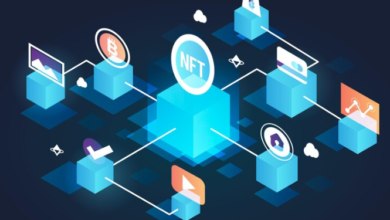Understanding Cryptocurrency: A Comprehensive Introduction

Cryptocurrency is a virtual currency that has revolutionized the world of finance and technology. In this introduction, we will explore its origins, technology, benefits, risks, and potential impact on the future of finance.
1. What is Cryptocurrency?
Cryptocurrency is digital money secured by cryptography, allowing for online transactions without traditional banks. They operate on decentralized technology, such as blockchain, and Bitcoin was the first and most well-known cryptocurrency. Several alternative digital currencies, also known as altcoins, have emerged over time, each with unique characteristics and uses.
2. How Does Cryptocurrency Work?
Blockchain technology powers the decentralized operation of cryptocurrencies. Here’s a brief overview of how this technology functions:
1. Blockchain Technology
A blockchain functions as a distributed ledger or database, capturing every transaction made across a network of interconnected computers (nodes).
2. Transaction Formation
Information about a cryptocurrency transaction (like sending a BTC to another party) is broadcast to the network of nodes.
3. Transaction Verification
Network nodes validate transactions using consensus protocols like Proof of Work (PoW) or Proof of Stake (PoS).
4. Block Creation and Mining
Verified transactions are organized into blocks, which are subsequently processed by miners or validators aiming to incorporate these blocks into the blockchain.
5. Consensus and Block Confirmation
Once a block is mined and added to the blockchain, it is distributed across the network, and nodes reach agreement on the validity of the block.
6. Immutable Record Keeping
A blockchain is a sequence of blocks, and each block includes a hash that refers back to the preceding block. This chain is immutable, and once a block is added, it cannot be altered or deleted without consensus from the network.
7. Distributed Ledger
The ledger of the blockchain is kept up by a group of nodes that are not centralized, which makes it impossible for any single point to fail or be tampered with. This ensures transparency and provides a secure way of recording transactions.
8. Cryptographic Security
Digital currencies utilize cryptographic practices to safeguard transactions and regulate the generation of fresh units.
9. Digital Wallets
Users store their cryptocurrencies in digital wallets, which manage their public and private keys.
3. Key Components of Cryptocurrency Transactions
1. Cryptographic Security:
Cryptographic techniques are employed to secure transactions, strengthening immunity to fraud and counterfeiting.
2. Decentralization.
A network of computers that operate in a decentralized manner is used by cryptocurrencies to validate and record transactions. This eliminates the requirement for a central entity such as a bank.
3. Consensus Mechanisms:
Blockchain networks use consensus algorithms (e.g., Proof of Work, Proof of Stake) to agree on the validity of transactions without the need for a central arbiter.
4. Digital Wallets:
Users store their cryptocurrencies in digital wallets, which are secure software applications that manage public and private keys needed to access and transact with the cryptocurrency.
4. Benefits of Cryptocurrency
The rise of cryptocurrency has brought forth several notable advantages:
1. Financial Inclusion:
Cryptocurrencies give people who are unbanked and underbanked access to the financial services anywhere in the world.
2. Lower Fees:
Cryptocurrency transactions would normally include lower fees than traditional banking methods, especially for transactions between entities in different locations.
3. Transparency and Security:
Blockchain technology ensures transparency and security by making all transactions publicly verifiable and resistant to tampering.
4. Decentralization:
Cryptocurrencies’ decentralized design lessens the need for centralized authorities, encouraging self-governance and independence.
5. Innovative Applications:
Cryptocurrencies enable the development of decentralized applications (dApps) and smart contracts, opening up new possibilities for innovation in various industries.
5. Risks and Challenges
While cryptocurrency offers numerous benefits, it also comes with its share of risks and challenges:
1. Volatility:
Cryptocurrencies are highly volatile which means its value fluctuates every now and then in short periods of time.
2. Regulatory Uncertainty:
There are no standard regulations for Cryptocurrencies. Each country has their own regulations which is a challenge when it comes to its acceptance by everyone.
3. Security Concerns:
Despite the use of cryptographic security measures, cryptocurrency exchanges and wallets are vulnerable to hacks and cyberattacks.
4. Environmental Impact:
Certain digital currencies like Bitcoin necessitate substantial energy consumption because of the intensive computational demands of mining operations.
6. The Future of Cryptocurrency
The world of cryptocurrency is on the brink of significant disruption and innovative strides in finance and other sectors. The trends to watch include mainstream adoption, central bank digital currencies, blockchain beyond finance, and interoperability among various blockchain networks.
7. Key Cryptocurrencies
Here are some notable cryptocurrencies that have garnered attention and adoption:
1. Bitcoin (BTC)
Bitcoin is the pioneer of cryptocurrency, and it was introduced in 2009 by Satoshi Nakamoto. It is also called the “digital gold” because its availability is already scarce.
2. Ethereum (ETH)
Ethereum pioneered intelligent contracts on its Proof of Stake blockchain, fueling the growth of decentralized applications (dApps), decentralized finance (DeFi), and non-fungible tokens (NFTs).
3. Ripple (XRP)
Ripple is a technology company specializing in global payment solutions. It is known for its RippleNet protocol and digital asset XRP, which are aimed at facilitating fast, secure, and cost-effective cross-border transactions.
4. Litecoin (LTC)
Also called “silver to Bitcoin’s gold”. This peer-to-peer currency, developed by Charlie Lee in 2011, enables fast and low-cost transactions through its Scrypt hashing algorithm.
5. Cardano (ADA)
Cardano is a 3rd gen blockchain emphasizing scalability, sustainability, and interoperability. It uses PoS consensus and aims to provide a secure framework for decentralized apps and smart contracts.
6. Binance Coin (BNB)
Binance Coin (BNB) is the primary Cryptocurrency of Binance, a leading global exchange platform.
Conclusion
Cryptocurrency is reshaping finance and technology, showing promise for mainstream adoption and innovation in decentralized finance. Key cryptocurrencies like Ethereum, Ripple, and Cardano demonstrate diverse functionalities, converging with emerging technologies to reshape industries and potentially establish a new economic state, paving the way for financial empowerment and technological innovation.




